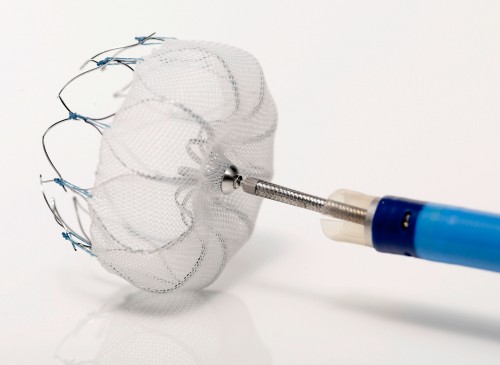
Felix Weise (Cardioangiologisches Centrum Bethanien, Frankfurt, Germany) and others report in EuroIntervention that a strategy of six weeks’ duration of dual antiplatelet therapy (DAPT) followed by lifelong aspirin “appears to be a viable alternative” to existing antithrombotic regimens in atrial fibrillation patients who have undergone percutaneous closure of the left atrial appendage (LAA).
The short-term DAPT strategy was associated with a lower than expected annual bleeding rate but did not appear to increase the risk of thromboembolic events.
The authors note that after successful implantation of a left atrial appendage closure device, in patients with atrial fibrillation, a transient antithrombotic regimen should be applied “to avoid device-related thrombosis formation and subsequent embolic events”. However, they comment: “Uncertainty exists on the optimal antithrombotic regimen as well as the optimal treatment duration.” They note that for the Watchman device (Boston Scientific), two treatment strategies have been put forward: oral anticoagulation plus aspirin for six weeks followed by six months’ DAPT and lifelong aspirin; and six months’ DAPT followed by lifelong aspirin. “Scarce data from controlled studies ae available for alternative devices but it is expert consensus to establish a six-month [duration of] DAPT,” the authors add.
The aim of the present study—a single-centre, observational study—was to investigate the feasibility of a short-term course of DAPT (six weeks) followed by lifelong aspirin therapy in an all-comers cohort receiving different left atrial appendage closure devices.
Of the 298 patients in the study, almost half (47%) received a Watchman or Watchman Flex device. The Amplatzer Cardiac Plug or Amulet (Abbott) was used in 42% of patients and the WaveCrest (Coherex Medical) in implanted in 11% of patients. The mean follow-up was 820±547 after left atrial appendage closure.
Non procedure-related bleeding events occurred in 4.4% patients taking DAPT 11±16 days and in 4% of patients after the cessation of DAPT. Weise et al note that while nine patients experienced a major bleed when just taking aspirin, one patient had a fatal gastrointestinal bleed when not taking any antithrombotic medication. They add that most patients with a non procedure-related bleed had a history of bleeding and most of these had the same type of bleeding, commenting, “thereof, 82.4% of patients with a gastrointestinal bleed had a prior history of gastrointestinal bleeding”. Furthermore, the annual major bleeding rate was 3.9% and Weise et al observe, “Given the expected bleeding rate of 8.7%, this reflects a reduction of 55.2%.”
Overall, 3.7% of patients had a non procedure-related thromboembolic event. The authors state: “Most importantly, early DAPT cessation did not lead to a higher incidence of thromboembolic events. In fact, the first stroke was noted 178 days after DAPT cessation. The observed annual stroke/systemic embolism rate of 1.7% is similar to previous reports such as the PREVAIL study.”
They conclude: “Short-term DAPT for six weeks appears to be a viable alternative for patients after left atrial appendage closure. Age >75 years and renal impairment increase major bleeding events threefold. Therefore, less aggressive antithrombotic strategies in these patient populations deserve investigation.”
Study investigator Boris Schmidt (Cardioangiologisches Centrum Bethanien, Frankfurt, Germany) told Cardiovascular News: “Bleeding has become the most prevalent complication following left atrial appendage closure; therefore, there is unmet need for risk adapted post implant antithrombotic strategies. Looking at clinical data, both a foreshortened period of antithrombotic medication or reduced intensity seem to work. However, ultimately we need a randomised comparison!”












